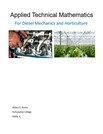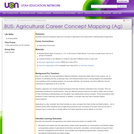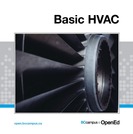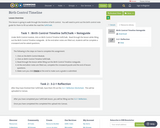
Draft of 1.1
- Subject:
- Applied Science
- Material Type:
- Activity/Lab
- Date Added:
- 05/31/2018

Draft of 1.1

Overview of the criminal justice system. Organization and jurisdiction of local, state, and federal lawenforcement, judicial, and correctional systems. History and philosophy of each component of thecriminal justice system and interrelations among the various agencies. Career opportunities andqualifying requirements. Lecture, on-line and classroom discussion.

Course PurposeWelcome to AJS-200 Current Issues in Criminal JusticeIn this course, we will be studying the major current issues facing the criminal justice system. We will use as our starting point the 2015 President's 21st Century Policing Task Force report on the police. This report came about after the death of Michael Brown, shot and killed by a Ferguson Missouri police officer. Many of the significant challenges to the way policing is carried out today came about following that one event. This course will allow you the student to examine the different calls for police reform and research the pros and cons of each. This course is an OER course meaning that there is NO TEXTBOOK to purchase. Instead, we will identify and use as our training material the governmental documents and other open resource documents on the internet to gain our insights into the topic of each week.

Applied Technical Mathematics for Horticulture and Diesel Mechanics is intended for a one-semester class with students who enter the semester with a good working-level of math skills. High school algebra and geometry are the only prerequisites,The technical math course at Kishwaukee College is unique in that the class combines students in horticulture with those from diesel mechanics. The course materials apply to both areas, as much as possible. The intent is to provide a solid foundation for solving job-related math problems for all students in the class. For this reason, the focus is on "how to solve" more than "why does this work?"Feedback, comments, etc. would be greatly appreciated!Robert E. Brownrbrown3@kish.edu

BSA 110 -- Personal FinanceWelcome to the wonderful world of Finance (and money)!! The course is a 8 weeks, you need to keep up with the Modules. There are 8 Modules, so we will complete one module every week.Personal Finance refers to how you manage your money, including your income, expenses, and savings. When you put effort into managing your personal finances, you have a better grasp on where your money is going and what changes you can make to meet your future financial goals. Your Personal Finances are crucial in almost all aspects of your life. How you handle your credit, what is your purchasing power, and am I prepared for retirement? What are my short- and long-term financial needs?We will be looking at many different topics: Investing, The Fed, Stocks, Mutual Funds, and Retirement, to name a few.

In this lesson students examine workplace tasks and concepts in agriculture and expand their understanding of agriculture.

Video and study guides for the following topics: Order of operations, algebraic manipulation, negative and fractional exponents, rounding, engineering notation, unit conversion, general industrial safety, energy, power, efficiency, capacity factor, basic electrical properties: voltage, current, resistance, fixed resistors, variable resistors, protoboards, ohmmeters, series resistors, parallel resistors, 4 band resistor color code, DC Ohm’s Law, DC power, voltmeters, ammeters, series DC circuit properties, DC Kirchhoff’s Voltage Law, DC voltage divider rule, parallel DC circuit properties, DC Kirchhoff’s Current Law, DC current divider rule, series-parallel DC circuit properties, instrument loading effects, DC current sources, source conversion, resistive delta-Y conversion, complex DC circuits, DC Superposition Theorem, DC Thevenin’s Theorem, DC Maximum Power Transfer Theorem, DC Norton’s Theorem

This course is the 2nd in a three part series intended to support the flipped classroom approach for traditional basic electronics classes. Basic Electronics 2 covers capacitors and the transient capacitor charge and discharge process, inductors and the transient inductor storage and release process, sinusoidal properties, complex numbers and complex impedance, phasors, AC Ohm’s Law, series AC circuit analysis, parallel AC circuit analysis, and series-parallel AC circuit analysis. The text includes discussions of Kirchhoff’s Voltage Law, the AC Voltage Divider Rule, Kirchhoff’s Current Law, and the AC Current Divider Rule. Additionally the text covers use of AC voltmeters, AC ammeters, function generators, and oscilloscopes. These resources are meant to accompany a hands on lab with the guidance of an instructor.

This course is the 3rd installment in a three part series intended to support the flipped classroom approach for traditional basic electronics classes. Basic Electronics 3 covers apparent, real, and reactive power and power factor, power factor correction, ideal and non-ideal transformers, and transformer connection diagrams, AC circuit analysis techniques and theorems like source conversion, the AC superposition theorem, AC Thevenin’s Theorem, and the AC Maximum Power Transfer Theorem, 3 phase AC systems including balanced and unbalanced 4 wire Y configurations, 3 wire Y configurations, and delta configurations, the single wattmeter method and the two wattmeter method. These resources are meant to accompany a hands on lab with the guidance of an instructor.

This readily accessible online introductory resource was developed for anyone who has interest in, or works with, HVAC controls and equipment. Designed for electrical and HVAC apprentices learning about the subject in school, you will find the descriptive text and original diagrams easy to navigate through, while the question bank will help students review the subject matter covered in each section.

This lesson is going to walk through the timeline of birth control. You will need to print out the birth control note guide for them to fill out while the read the SoftChalk.

This task was developed by high school and postsecondary mathematics and agriculture sciences educators, and validated by content experts in the Common Core State Standards in mathematics and the National Career Clusters Knowledge & Skills Statements. It was developed with the purpose of demonstrating how the Common Core and CTE Knowledge & Skills Statements can be integrated into classroom learning - and to provide classroom teachers with a truly authentic task for either mathematics or CTE courses.

This task was developed by high school and postsecondary mathematics and agriculture sciences educators, and validated by content experts in the Common Core State Standards in mathematics and the National Career Clusters Knowledge & Skills Statements. It was developed with the purpose of demonstrating how the Common Core and CTE Knowledge & Skills Statements can be integrated into classroom learning - and to provide classroom teachers with a truly authentic task for either mathematics or CTE courses.

This task was developed by high school and postsecondary mathematics and agriculture sciences educators, and validated by content experts in the Common Core State Standards in mathematics and the National Career Clusters Knowledge & Skills Statements. It was developed with the purpose of demonstrating how the Common Core and CTE Knowledge & Skills Statements can be integrated into classroom learning - and to provide classroom teachers with a truly authentic task for either mathematics or CTE courses.

This task was developed by high school and postsecondary mathematics and agriculture sciences educators, and validated by content experts in the Common Core State Standards in mathematics and the National Career Clusters Knowledge & Skills Statements. It was developed with the purpose of demonstrating how the Common Core and CTE Knowledge & Skills Statements can be integrated into classroom learning - and to provide classroom teachers with a truly authentic task for either mathematics or CTE courses.

This task was developed by high school and postsecondary mathematics and agriculture sciences educators, and validated by content experts in the Common Core State Standards in mathematics and the National Career Clusters Knowledge & Skills Statements. It was developed with the purpose of demonstrating how the Common Core and CTE Knowledge & Skills Statements can be integrated into classroom learning - and to provide classroom teachers with a truly authentic task for either mathematics or CTE courses.

This task was developed by high school and postsecondary mathematics and agriculture sciences educators, and validated by content experts in the Common Core State Standards in mathematics and the National Career Clusters Knowledge & Skills Statements. It was developed with the purpose of demonstrating how the Common Core and CTE Knowledge & Skills Statements can be integrated into classroom learning - and to provide classroom teachers with a truly authentic task for either mathematics or CTE courses.

This task was developed by high school and postsecondary mathematics and design/pre-construction educators, and validated by content experts in the Common Core State Standards in mathematics and the National Career Clusters Knowledge & Skills Statements. It was developed with the purpose of demonstrating how the Common Core and CTE Knowledge & Skills Statements can be integrated into classroom learning - and to provide classroom teachers with a truly authentic task for either mathematics or CTE courses.

This task was developed by high school and postsecondary mathematics and design/pre-construction educators, and validated by content experts in the Common Core State Standards in mathematics and the National Career Clusters Knowledge & Skills Statements. It was developed with the purpose of demonstrating how the Common Core and CTE Knowledge & Skills Statements can be integrated into classroom learning - and to provide classroom teachers with a truly authentic task for either mathematics or CTE courses.

This task was developed by high school and postsecondary mathematics and design/pre-construction educators, and validated by content experts in the Common Core State Standards in mathematics and the National Career Clusters Knowledge & Skills Statements. It was developed with the purpose of demonstrating how the Common Core and CTE Knowledge & Skills Statements can be integrated into classroom learning - and to provide classroom teachers with a truly authentic task for either mathematics or CTE courses.